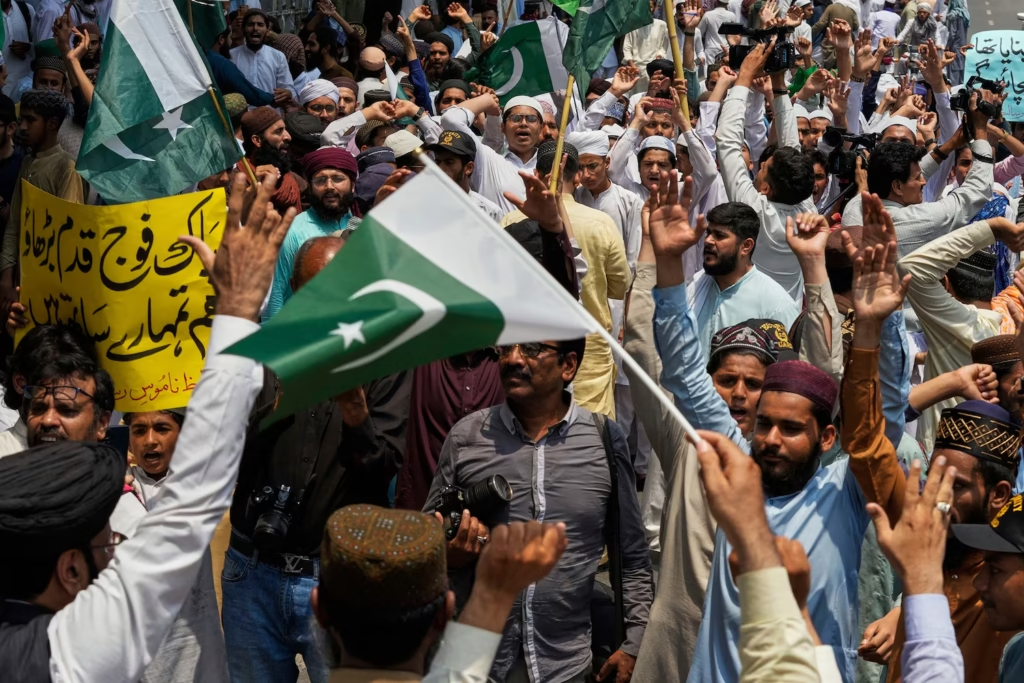In a significant development that has brought a sense of relief to the international community, India and Pakistan have officially agreed to a full and immediate ceasefire, effectively ending the rising tensions that had escalated following a deadly attack in Indian-controlled Kashmir in April 2025. The announcement was made by Pakistan’s Foreign Minister Ishaq Dar, with confirmation from Indian officials, marking a crucial step toward de-escalation between the two nuclear-armed nations.
The breakthrough came after intense diplomatic talks, which were mediated by the United States. U.S. President Donald Trump took to social media to announce the ceasefire, expressing his satisfaction with the outcome and praising both nations for their decision. In a post on Truth Social, Trump said, “After a long night of talks mediated by the United States, I am pleased to announce that India and Pakistan have agreed to a FULL AND IMMEDIATE CEASEFIRE. Congratulations to both Countries on using Common Sense and Great Intelligence. Thank you for your attention to this matter!”
Secretary of State Marco Rubio, who played a key role in the negotiations, also commended the leadership of Indian Prime Minister Narendra Modi and Pakistani Prime Minister Nawaz Sharif. Rubio highlighted their wisdom, prudence, and commitment to peace, stating, “We commend Prime Ministers Modi and Sharif on their wisdom, prudence, and statesmanship in choosing the path of peace.” Over the past two days, Rubio and U.S. Vice President JD Vance had engaged in discussions with both Indian and Pakistani officials, working tirelessly to broker the ceasefire that has now been achieved.
The ceasefire comes after a period of heightened conflict between India and Pakistan, particularly following the April 22, 2025 attack on Hindu tourists in Indian-controlled Kashmir. India had blamed the attack on Pakistani-backed militants, an allegation that sparked retaliatory airstrikes by India against targets in Pakistan and Pakistan-administered Kashmir. The escalation resulted in a number of civilian casualties, as both sides exchanged cross-border fire and strikes, raising fears of an all-out conflict.
The Indian government had been vocal in its condemnation of Pakistan’s actions, with Foreign Secretary Vikram Misri asserting, “I have said on numerous earlier occasions, it is Pakistani actions that have constituted provocations and escalations.” Misri stressed that India’s response was measured and responsible, and that India had defended itself against these provocations. “Earlier this morning, we saw a repeat of this escalatory and provocative pattern,” Misri said, alluding to the continued cross-border violence.
Indian Army Col. Sofiya Qureshi echoed these sentiments, describing the movements of Pakistani troops as indicative of “offensive intent to further escalate the situation.” Qureshi assured the public that the Indian armed forces remained in a state of high operational readiness, ready to respond appropriately to any further hostilities. “Indian armed forces remain in a high state of operational readiness,” she emphasized, “All hostile actions have been effectively countered and responded appropriately. Indian armed forces reiterate their commitment to non-escalation, provided it is reciprocated by the Pakistan military.”
Amidst these tensions, Indian Air Force Wing Commander Vyomika Singh denied Pakistan’s claims of successfully targeting and damaging India’s military infrastructure, including the S-400 system at Adampur and various airfields. Singh accused Pakistan of spreading malicious misinformation, particularly on social media, with claims of significant damage to India’s military assets. “India unequivocally rejects these false claims being spread by Pakistan,” Singh said, reaffirming India’s position on the matter.
Despite these assertions, the situation had remained volatile, with both sides accusing each other of escalating hostilities. On May 10, 2025, supporters of the religious group “Tahafuz-e-Namoos-e-Risalat Mahaz” in Lahore, Pakistan, organized a rally to condemn India’s military actions in Pakistan and express support for the Pakistani Army. This demonstration underscored the high stakes involved, with public sentiment in both countries remaining tense and polarized.
As the ceasefire takes effect, many in the international community are breathing a collective sigh of relief. The two countries, which have a long history of conflict and territorial disputes, particularly over the region of Kashmir, have once again found themselves at the center of global attention. The specter of nuclear warfare between India and Pakistan has always been a major concern, and the potential for escalation had many around the world anxiously monitoring the situation.
The ceasefire agreement, while a positive step forward, does not necessarily signal the end of tensions between the two nations. The root causes of the conflict, particularly the longstanding dispute over Kashmir, remain unresolved. However, the agreement to halt hostilities is a testament to the diplomatic efforts and pressure from the international community, particularly the United States, which has long played a role in mediating peace efforts in the region.
The situation remains fluid, and the ceasefire could be fragile. The coming days and weeks will be critical in determining whether both sides can adhere to the agreement and engage in meaningful dialogue to address the underlying issues. The international community, including the United Nations and other global powers, will likely continue to monitor the situation closely, urging both India and Pakistan to take steps toward a more lasting peace.
The role of U.S. diplomacy in this process has been crucial, with President Trump’s intervention and the efforts of Secretary of State Marco Rubio and Vice President JD Vance playing a pivotal role in bringing both parties to the negotiating table. The U.S. has long been invested in maintaining stability in South Asia, given the strategic importance of the region and its proximity to other global flashpoints.
In addition to the U.S. efforts, other regional powers, such as China and Russia, have also expressed their support for the ceasefire and have called for continued dialogue between India and Pakistan. These countries, along with the broader international community, recognize the potential for further instability in the region and are eager to prevent any further escalation.
While the immediate threat of violence may have been quelled, the broader geopolitical challenges remain. The dispute over Kashmir continues to be a source of deep division between India and Pakistan, and finding a long-term resolution will require significant concessions from both sides. The international community, however, remains hopeful that this ceasefire could serve as the first step in a broader peace process that might eventually lead to a more comprehensive settlement.
For now, however, both India and Pakistan have committed to a full and immediate ceasefire, and the world watches closely as these two nuclear powers take this crucial step toward peace. Whether this ceasefire can hold, and whether it can lead to a more lasting peace, will remain to be seen. But for the moment, the immediate risk of conflict has been averted, and that in itself is a significant achievement.
As the ceasefire takes effect, the world holds its breath, hoping that this fragile peace can provide the foundation for a more stable and peaceful future in South Asia. The road ahead remains uncertain, but the hope is that this step will eventually lead to a lasting resolution to one of the world’s most intractable conflicts.


